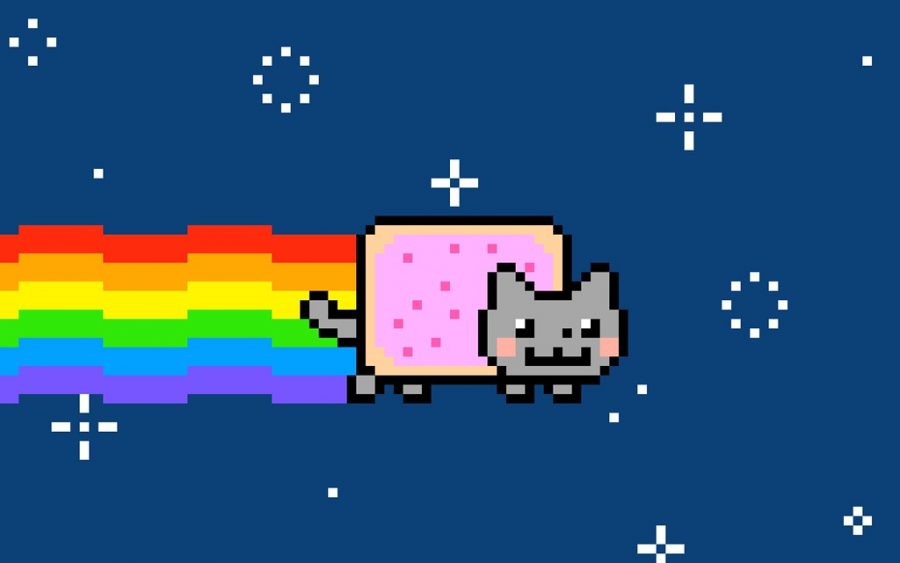The very famous “Nyan Cat” original NFT sold for $580,000
NFT stands for non-fungible tokens. It’s easiest to think of NFTs as a file format. People use file formats like jpg, png, or gifs to transfer information or value on the internet. NFTs are a file format that transfers data and value on blockchain networks like Ethereum. Since NFTs exist on blockchains, these tokens (or files) contain properties similar to bitcoin, primarily digital ownership (a token in a person’s wallet) and transparency (all activity is recorded on a blockchain). For those of you unfamiliar with blockchains, an easy way of describing it is a system of recording information in a way that makes it difficult or impossible to change, hack, or cheat the system. A blockchain is essentially a digital ledger of transactions that is duplicated and distributed across the entire network of computer systems on the blockchain.
The term non-fungible refers to the concept of fungibility. In economics, fungibility is the property of a good or a commodity whose individual units are essentially interchangeable and each of whose parts is indistinguishable from another part. A good is said to be fungible if it is identical and interchangeable. For example, $1 is worth $1. You would happily swap dollars with me since we all agree they have the same value. Comparatively, an item is said to be non-fungible if it is unique. There are many items that are non-fungible including diamonds, houses and baseball cards. No two of these items are the same; diamonds have different colors and cuts while houses even in identical neighborhoods have different locations which affect how light comes into the house. An NFT is simply a token (or piece of information) that is unique. A common example of an NFT might be a digital trading card or piece of digital art.
A great example that helped me understand NFT is real physical artwork such as the painting of the Mona Lisa made by Leonardo da Vinci. There are millions of copies of the original painting that are commonly seen in teachers’ classrooms, people’s houses and many more locations. Although the copies of the artwork are very similar to the original, the copies are not worth anything close to the $850 million (USD) at which the Mona Lisa is valued.
NFTs are interesting because their uniqueness and ownership can be verified, they can be utilized across applications developed by different companies and they can be traded easily through secondary markets. These features open up possibilities for new use cases and business models. Going back to the Mona Lisa example, the copies are not worth nearly as much as the original. There are people who are willing to pay $850 million to have the original. The same thing is true with many NFTs. For example, an NFT of the classic “Nyan Cat” just sold for 300 ETH or a whopping $560,000. People who want a piece of history, a piece of someone’s life, or something they feel is important are willing to pay hundreds of thousands of dollars for digital pictures, but only the original.
NFT is the future of art, and the purchase of this art with cryptocurrency will become a common occurrence. Get in this boat quickly because it’s leaving and you will miss it.

